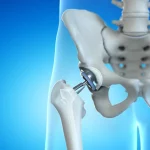The condition known as “Prolapsed Intervertebral Disc” or herniated disc affects the spine and frequently results in back or neck pain. The tissue that lies between neighboring vertebrae and is shaped like a circle is called the intervertebral disc. The plate provides stability by acting as a pad between two vertebrae.

The intervertebral disc is made up of a delicate focus called the core pulposus and a thick, stringy outer layer called the annulus. The endplate is the outer layer that joins the vertebrae. Ligaments that contribute to the vertebra’s development shape the endplate. During adolescence, the endplate is thick and then gradually gets thinner.
The annulus fibrosis is intense and versatile due to its concentric layers of thick filaments. Because of its soft, gel-like consistency, the core pulposus can withstand pressure and allow for padding action. The deepest layer of the annulus fibrosis is supplied by the sinuvertebral nerve, which arises from the dorsal root ganglion.
Causes of PIVD
- Age-related degeneration of the intervertebral disc is the most frequent cause of PIVD.
- Injuries, trauma, and incorrect lifting techniques are additional factors that can lead to disc herniation.
- Genetics: The resilience and strength of intervertebral discs can be influenced by genetic factors. Some people may be genetically predisposed to disc degeneration.
Symptoms of PIVD
- Location-Specific Pain: The afflicted area of the spine is frequently the site of pain. For instance, if the lumbar spine is impacted, lower back pain.
- Radiating Pain: As the injured nerve travels, pain may radiate into the arms, legs, or buttocks.
- Numbness and Weakness: Nerve compression can result in tingling, numbness, or weakness in the limbs.
Diagnosis of PIVD
Your examining physician will decide whether or not you have a herniated disc. Regarding the start of the manifestations and the exercises that triggered the indications, a thorough history is obtained. Usually, the physician will conduct a thorough evaluation. The actual evaluation consists of several tests intended to prevent the herniation zone from exhibiting its symptoms. The physician will also examine the motor and the tactile components of the limbs.
- Clinical Examination: To assess neurological function and symptoms, a medical professional may perform a physical examination.
- Imaging: To see the spine and determine whether and where a disc herniation is present, MRI are frequently performed.
Treatment of PIVD
- Conservative Measures: Medication, physical therapy, and rest are often enough to manage many cases without the need for surgery.
- Medication: Doctors may prescribe muscle relaxants, anti-inflammatory medications, and pain relievers.
- Physical therapy: Structural exercises and stretches to increase flexibility and strengthen the spine.
- Corticosteroid injections: Into the epidural space to reduce inflammation are known as epidural injections.
- Surgery: Discectomy or microdiscectomy are surgical options that may be considered in severe cases when conservative methods fail.
Recovery and Lifestyle Modifications
- Rehabilitation: To restore function and avoid further problems, physical therapy and rehabilitation are essential.
- Lifestyle Modifications: Appropriate body mechanics, consistent exercise, and maintaining a healthy weight can all help prevent recurrence.
Conclusion
In conclusion, a common spinal ailment known as prolapsed intervertebral disc can result in differing degrees of discomfort and disability. PIVD patients can greatly improve their quality of life and achieve better outcomes with early diagnosis and appropriate management, whether conservative or surgical. For individualized advice and treatment, it is imperative that those who are experiencing symptoms speak with medical professionals.






Pivd
Thanks for this wonderful information